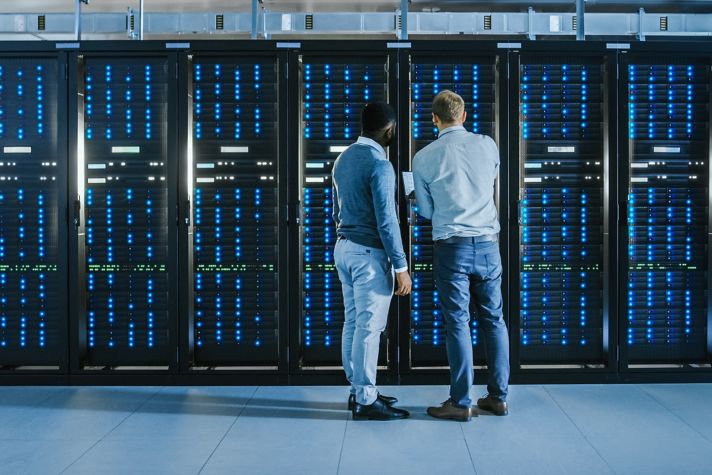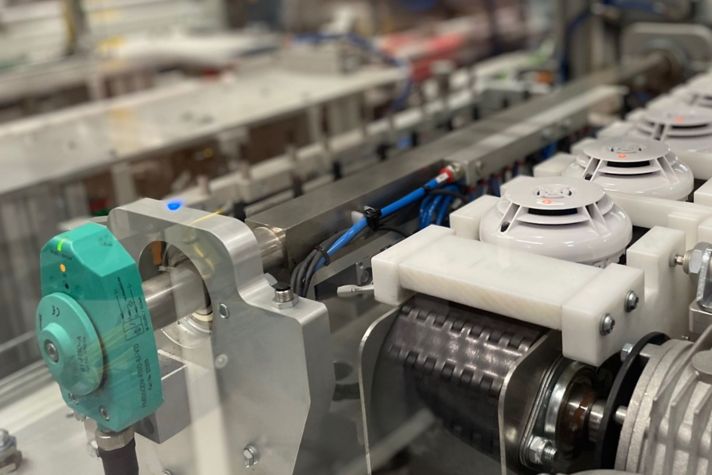-
Global
-
Africa
-
Asia Pacific
-
Europe
-
Latin America
-
Middle East
-
North America
- |
- BUSINESSES
- |
- Contact
- |
-
Global
-
Africa
-
Asia Pacific
-
Europe
-
Latin America
-
Middle East
-
North America
- |
- BUSINESSES
- |
- Contact
- |
You are browsing the product catalog for
You are viewing the overview and resources for
- News
- 3 Ways AI is Revolutionizing Building Management
3 Ways AI is Revolutionizing Building Management
Get the highlights from Honeywell’s AI in Buildings study and learn how building managers are focusing on three critical areas: maintenance, security and energy efficiency
In a state-of-the-art office tower in the heart of the city, operations hum along with precision. The HVAC system adjusts in real-time to fluctuations in occupancy. Comfort is optimized without wasting energy. Security cameras, powered by AI, analyze movement patterns and flag any anomalies before they escalate into incidents. While all this is happening, a predictive maintenance system, embedded in the building’s infrastructure, detects a minor irregularity in the plumbing and issues an alert. A costly pipe burst has just been prevented. This scenario might feel futuristic, but it’s closer to reality than ever.
Honeywell recently published findings from its AI in Buildings study, which polled 250 U.S. building managers and senior decision makers across building types including offices, hospitals, airports, schools, universities, hotels and data centers. To participate in the research, respondents had to use AI-enabled property management systems in buildings with more than 250 occupants.
One of the key findings: 84% of commercial building decision-makers plan to increase their use of AI in the coming year. As AI becomes more prevalent, building managers are focusing specifically on three critical areas: maintenance, security and energy efficiency.
Predicting problems before they start
One of the most significant transformations AI brings is in predictive maintenance. Maintenance in buildings has been a mostly reactive process in the past, where systems are repaired only after they fail, but AI flips this model on its head, using sensors and data analytics to anticipate issues before they occur. Honeywell’s AI in Buildings study found that 60% of organizations have already integrated AI-driven maintenance, recognizing its potential to prevent failures before they happen.
While any building can benefit from AI-driven maintenance, it’s larger, more complex infrastructures that gain the most.
“Any type of building can benefit from AI,” said Dave Molin, President of Building Management Services at Honeywell. “In reality, though, it will be the larger and more complicated buildings that will adopt it first.”
For facilities like hospitals, hotels, government buildings and commercial real estate, even modest energy savings and reduced downtime can help justify the investment in AI technology.
Creating safer, smarter spaces
AI is also reshaping how buildings approach security, making them safer and smarter at the same time. 63% of respondents to Honeywell’s AI in Buildings study indicated that they use AI to detect unusual behavior and identify potential threats before they escalate. More than half of respondents use AI-driven tracking systems to improve emergency response, ensuring a faster, more coordinated approach to safety.
Biometric access controls have also gained traction, with 45% of respondents to the study relying on AI to regulate entry and prevent unauthorized access. These intelligent systems analyze data in real time, all to strengthen security measures and maintain seamless access for occupants.
Enabling buildings to use only what they need
Energy efficiency has long been a challenge in large buildings, where fluctuating occupancy and outdated control systems often lead to unnecessary energy waste.
Picture an AI-driven HVAC system that automatically reduces power consumption in an unoccupied office wing or adjusts lighting on real-time daylight levels. More than half of the study’s respondents use AI for energy management, optimizing systems such as lighting, temperature and water consumption based on real-time conditions. Adaptable control systems that optimize performance are more important than ever as buildings evolve.
“Buildings are living organisms. What today is a copy center, tomorrow could be a small data center or large conference room. All three of these use cases have remarkably different control needs. Since they are always evolving, the controls in those buildings need to be both flexible and intelligent,” Molin said.
Preparing teams for the AI wave
While AI enhances automation and efficiency, it does not replace human oversight. A noteworthy challenge in AI adoption is the skills gap among building management professionals. According to the AI in Buildings study, 92% of decision-makers reported difficulty finding tech-savvy professionals skilled enough to navigate this new technological environment.
Rather than expecting instant perfection, it’s important to understand that AI systems adapt over time through experience and data.
“In a perfect implementation, the AI behaves like a black box. Don’t waste time trying to understand every element of how the AI will perform because the AI will recommend things that don’t work immediately – and that’s how the AI learns,” Molin said.
The solution is upskilling existing workers with workforce training and empowering employees to thrive alongside AI technology.
Building managers looking to implement AI effectively will benefit most by collaborating with trusted technology partners who can guide them through this ever-changing landscape. Instead of mastering every technical detail, managers and their teams can focus on embracing an open mindset and approaching AI as an intelligent assistant that complements human skills.
Read more in Honeywell’s AI in Buildings study.
Copyright © 2025 Honeywell International Inc.




